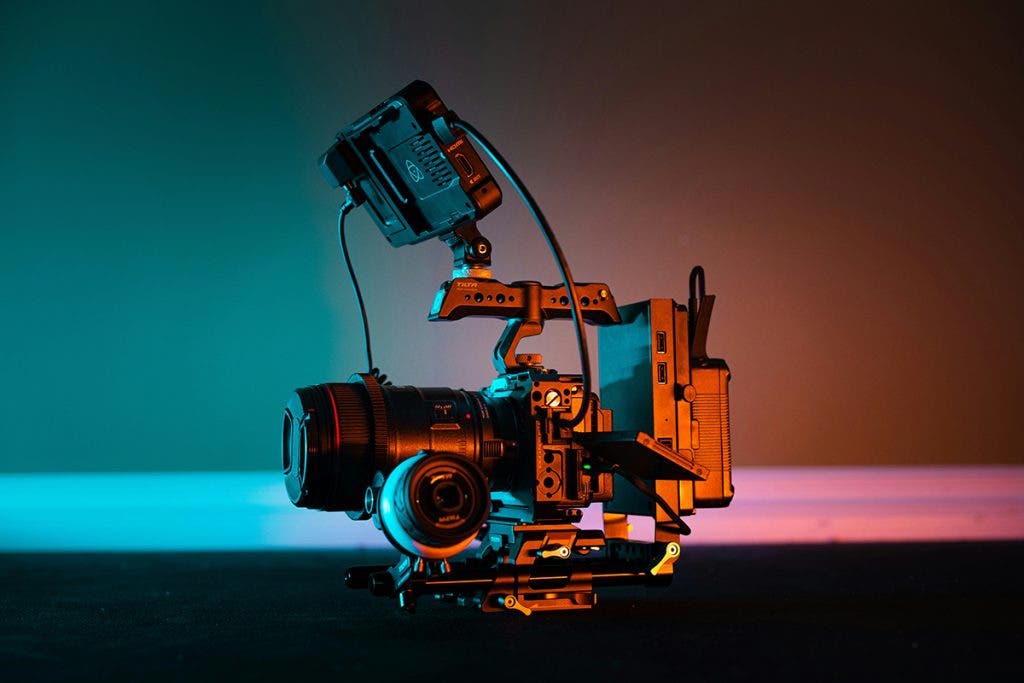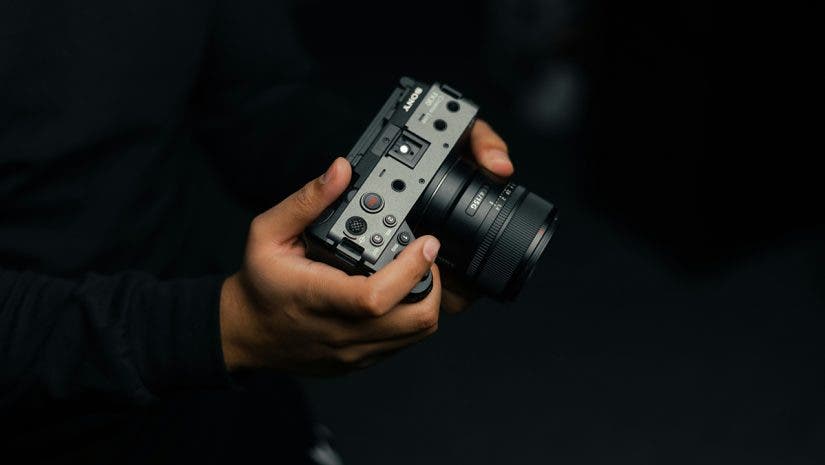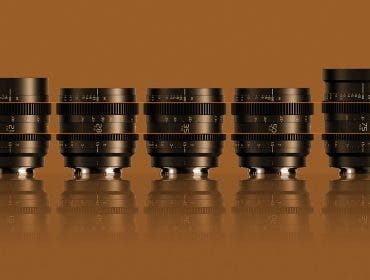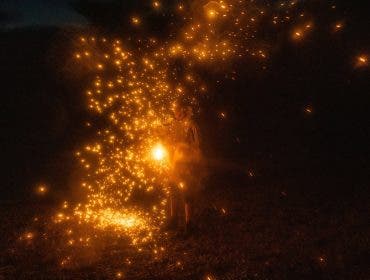Deciding between a cine camera versus a non-cine camera is a huge decision when you’re in the market for a new camera. While the choice may be evident for those who strictly shoot video, hybrid shooters have a more challenging resolution. On one hand, cine cameras can offer some impressive video specs, but is it necessary when today’s DSLR and mirrorless cameras can provide video specs that rival some of the top cine cameras? In this article, we’ll cover everything you need to know about the differences between cine and non-cine cameras and help you decide which works better.

Essential Features of a Cine Camera
While video resolution is usually the headline feature in new cameras, there are many other important specs to look for that don’t get the resolution’s attention. Dual native ISOs, internal fans, focus points, and more should all be considered when picking out a cine camera. Let’s explore some of these features and discuss what they are and why they’d be necessary.
Dual-Native ISO
Dual native ISO refers to cameras with minimal noise and two different base ISO levels. For videographers, this is important because it can help you get cleaner footage. For example, a camera with dual native ISOs of 800 and 12800 would offer a cleaner image at ISO 12800 than at ISO 3200. If you shoot video in low-light situations, having that second native ISO can help you get much cleaner video at high ISOs, which wasn’t possible before dual native ISO.
Internal Fan
Most standard DSLR and mirrorless cameras don’t contain an internal fan because the sensor will rarely get too hot, even when shooting in burst. On the other hand, cine cameras will almost exclusively contain fans. If you’re shooting more than a couple minutes of video at a time, especially at higher resolutions or framerates, a fan helps to keep the camera cool and avoid shutting down. Documentary and interview videographers must have an internal fan to keep their cameras rolling longer.
Focus Points
Another critical specification of cine cameras is the number of focus points. While photographers can get by with fewer focus points, most videographers demand the absolute best autofocus because scenes can move quickly, and often, you only have one chance to get the shot. Usually, 500+ focus points are sufficient as long as they cover at least 85% of the frame.
Video Resolution
While most higher-end cameras typically capture 4K footage, consider the number of frames at each resolution. You’ll need a higher frame rate to capture slow motion. Many top-tier cine cameras offer 4K shooting at 120 frames per second; some can even shoot at up to 240 frames per second. When shooting at these high resolutions and frame rates, the internal fan becomes necessary to help keep the camera’s sensor cool and prevent the camera from shutting down.

Sony FX3 (Cine) vs Sony FX30 (Cine) vs Sony A7R IV (Non-Cine)
Three of the most popular Sony cameras on the market are frequently debated about their key differences. The Sony FX3 offers cine features in a full-frame body, while the FX30 offers some of the same cine features in a crop sensor. On the other hand, the Sony A7R IV is not a cine camera but provides some equally impressive specs in a full-frame body. But can the A7R IV compete with the FX lineup of cameras regarding video?
Similarities
All three cameras are comparable in size, weight, and focus points. While the A7IV and FX30 have a few more focus points than the FX3 (759 vs. 627), you likely won’t see much difference when you are actually out shooting with them. Battery life is also similar on all three camera bodies, each using the same battery.
Differences
Both cine cameras can shoot in 4K/120p, compared to 4K/60p on the A7IV. This can be a massive difference for those who want to capture slow-motion footage for their films. Additionally, all three cameras have different dual native ISOs, the best of which is the FX3. A dual native ISO of 800 and 12800 allows you to capture extremely high-quality footage even in very low-light conditions. The cine cameras also have internal fans, allowing you to record longer videos without the risk of the camera overheating and shutting down.
| Camera Specs | Sony FX3 | Sony FX30 | Sony A7IV |
|---|---|---|---|
| Sensor Size | Full Frame | APS-C | Full Frame |
| Megapixels | 12.1 MP | 26.0 MP | 33.0 MP |
| Video Resolution | 4K/120p (1.1x Crop) | 4K/120p (1.6x Crop) | 4K/60p |
| Battery Life | 600 Shots | 570 Shots | 580 Shots |
| Color Sensitivity | 24 bits | 10 bits | 25.4 bits |
| Focus Points | 627 | 759 | 759 |
| Dual Native ISOs | 800 / 12800 | 800 / 2500 | 800 / 3200 |
| Weight | 1.58lbs/715g | 1.42lbs/646g | 1.45lbs/659g |
| Internal Fan | Yes | Yes | No |
Who Should Buy a Cine Camera?
Cine cameras are truly made for professional videographers or prosumers. Non-cine cameras can capture excellent quality video for most creators, but a cine camera is still the go-to choice for the cinematic look you’re used to seeing. Additionally, if your goal is to capture longer cinematic or interview-style videos, a cine camera with an internal fan is necessary. If you need the best quality footage and demand top-tier video specs, a cine camera is for you.
Who Should Buy a Non-Cine Camera?
Non-cine cameras like the Sony A7IV are some of the most popular cameras in the world, and for good reason. They are excellent for photographers, and hybrid shooters will find them to offer adequate video specs while offering excellent photos. Suppose you shoot just as many photos as videos and aren’t shooting professional-style interviews and documentaries. In that case, a non-cine camera should provide you with everything you need and more regarding your creativity.
Picking between a cine and a non-cine camera is a huge decision; choosing the right camera body is a decision you’ll have to live with for years. As you can see, both cine and non-cine cameras offer competitive specs, making this decision difficult. Using the information outlined in this article should help you decide whether a cine camera is right for you. Finally, remember that the camera is just a tool, and to fully maximize its potential, you need experience in the field and lots of practice.






